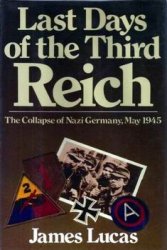Theobald had been made archbishop in 1139. He had managed to protect the interests of the church quite well both against deliberate encroachments by the warring Stephen and Matilda and against depredations traceable to the relative absence of effective royal government during the “anarchy” of Stephen’s reign. Although Theobald welcomed Henry’s accession with great hopes, having a strong monarch on the throne, while it made defense against depredations by private parties easier than under Stephen, only increased the possibility of royal encroachments on what the church saw as its rights and privileges. Still, on balance, Henry and Theobald got along relatively well. Indeed, in light of the dramatic events to come, a certain amount of nostalgia for what in retrospect looked like the minimal church-state quarrels of Theobald’s archiepiscopate is not surprising in some of the surviving sources of the twelfth century.
Theobald died in April 1161, giving Henry the opportunity to name a new archbishop of Canterbury. At this point, Henry made what is usually counted the greatest mistake of his life. He decided that Thomas should be the new prelate and ensured that the monks of the cathedral chapter, who were the formal electors of archbishops of Canterbury, would choose him. The “election” occurred in May 1162. At the time, it undoubtedly seemed to Henry like a brilliant stroke. This was a man whom he knew, trusted, and probably even loved, who had spent more than seven years faithfully carrying out royal policies, who could be expected to carry into his new position a sympathetic understanding of what the king needed and wanted from the church in his kingdom.
Appointment of Bishops in the Twelfth Century
In the earlier Middle Ages, important church officials such as bishops and abbots were often appointed by kings and other local secular rulers. From the middle of the eleventh century, the so-called Investiture Controversy raged over the attempts of several successive popes to challenge these practices. The English side of the controversy, in which Archbishop Anselm was pitted against Henry I, was resolved in 1107 by the establishment of a set of rules to which, usually, only lip service was paid. The initial demand made by papal reformers was that bishops and abbots (and abbesses) be elected in the manner envisioned by the earliest generations of church leaders—that is, bishops by the faithful of their dioceses and abbots and abbesses by the monks or nuns of their convents. This rule was observed to some extent in the case of abbots and abbesses, though in elections to head an important institution the monks or nuns often came under a good deal of pressure to elect a specific person. In the case of bishops, the letter of the rule may have been observed but the spirit was certainly violated. In practice, to speak of England specifically, the king appointed every bishop in the kingdom: having decided whom he wanted in the see, he would send a writ to the cathedral chapter, the monks or canons who served as the clergy of the cathedral, ordering them to elect that person.
The faithful of the diocese had no say in the matter at all, and any cathedral chapter that flouted the king's command was in for serious, prolonged trouble. In the most dramatic example, in 1205 a majority of the members of the chapter of Canterbury refused to elect King John's nominee, leading to—among other things—eight years of increasingly oppressive attempts by the king to force them to accept his candidate, Pope Innocent III's placement of an interdict on England, the pope's excommunication of the king, and a plot against the king's life on the grounds that, as an excommunicate, he was not owed allegiance from anyone. The quarrel was resolved in 1213, when the king again promised free elections, a promise repeated in the first clause of Magna Carta when John was forced to agree to it in 1215. Nevertheless, for as long as the church in England remained subordinate to the church in Rome, it was effectively the king who named bishops, subject only to the veto of the pope, which he rarely exercised. When in the 1530s King Henry VIII wrenched the Church of England out of its allegiance to Rome, even this vestige of outside control disappeared. Bishops of the Church of England are to this day still, in form, appointed by the monarch.
Thomas was certainly, at the time of his appointment, less acceptable to the church as archbishop than he was to the king. Though he would have taken the minor clerical orders at the latest when he entered Theobald’s household and Theobald consecrated him a deacon before appointing him archdeacon of Canterbury, Thomas was not a priest. None of the offices he had held had required him to be able to exercise the “cure of souls”—that is, to minister to the faithful, so he had never celebrated the Mass, never heard a confession, never administered any other sacrament. Unlike every other archbishop since the Conquest, he was not a monk, which displeased the monks of the chapter of the cathedral church of Canterbury because the archbishop was automatically their abbot. He was, moreover, by no means the most obviously qualified candidate for archbishop. Many, perhaps all, of the English bishops probably thought they were more qualified. Conspicuously, this was true of Gilbert Foliot the bishop of London, who had probably been expecting the promotion to Canterbury for years. Gilbert subsequently became, in part at least out of disappointment, one of the leaders of Thomas’s opponents among the English clergy.
Even Thomas, it is said, advised Henry that appointing him was a bad idea, but Henry would not take no for an answer. Consequently, Thomas repaired to Canterbury, where he was ordained a priest on June 2, 1162, and consecrated archbishop the next day. He celebrated the Mass for the first time in his life immediately after his ascent to the highest clerical office in the land. In August, he received from the pope the pallium, the stole of office bestowed on archbishops to symbolize the delegation of papal jurisdiction to them.




 World History
World History









